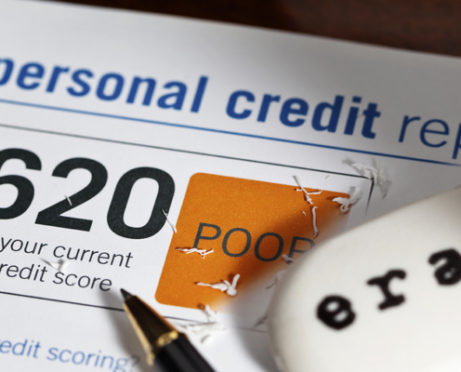
It is likely that between 300,000 and 400,000 Americans will file for personal bankruptcy protection this year, which is a decrease from past levels, and therefore good news. Demographically, men and women file at about equal rates, with slightly more female filers than male filers in typical years. The median age of bankruptcy petitioners has been increasing due to fewer people under the age of 25 filing and more people over the age of 55 filing. If current trends continue, the median age for bankruptcy filers this year will be in their late 40s. Additionally, over half of the bankruptcy filers are married couples.
One significant change in the past 15 years has been in why people file for bankruptcy. Fifteen years ago, the primary cause of bankruptcy was uninsured medical debt or expenses related to health issues, such as a job loss due to a medical problem. However, this is no longer the case, as fewer people are burdened with significant uninsured medical expenses. Nonetheless, job loss remains a significant contributing factor.
There is undoubtedly a connection to financial literacy. People who have adequate emergency funds and reasonable debt levels can weather financial storms more than can those who struggle paycheck to paycheck. While bankruptcy can happen to people from all walks of life and is not predictable at an individual level, proper money management can certainly reduce the likelihood of going bankrupt, but not eliminate it entirely.
Before Considering Bankruptcy
Not every financial hardship should result in bankruptcy.
Bankruptcy should be considered a last resort.
There are steps that can be taken to prevent bankruptcy with minimal disruption to your financial world.
The first step when facing financial difficulties is to attempt to work directly with creditors. While not all creditors will be willing to cooperate, many are. They know, through experience, that their chances of recovering their debts are higher when they work with their debtors instead of going through bankruptcy courts. Unsecured creditors, in particular, prefer to avoid bankruptcy courts. Secured creditors will take into account the security and the specific situation.
It is essential to be open and honest with your creditors. Do not make payment promises or arrangements that you are not confident you can fulfill. This will damage your credibility and will make further negotiations less productive.
If working directly with creditors doesn’t solve the issue, consider seeking outside help, such as credit counseling. Credit counseling may offer a debt settlement solution, which can still harm your credit, but not as much as a bankruptcy.
Types of Bankruptcy
For individuals, there are two types of bankruptcy: liquidation, which is a Chapter 7 bankruptcy, and reorganization, which is generally a Chapter 13 bankruptcy, although in rare cases for individuals, it will be a Chapter 11.
Chapter 7 allows qualifying individuals or couples the opportunity to discharge most of their debt. However, not every bankruptcy can be done under Chapter 7, there are income limits and other requirements that vary from state to state. The gist of Chapter 7 is that the petitioner gives up most of their assets and their debts are forgiven. They can reaffirm a secured debt if they choose to and can afford to. For example, they may choose to bring their mortgage current and keep their home or bring their auto loans current and keep their cars.
There is generally no valid reason to bring unsecured debt current and keep it, regardless of what the creditor may tell you. Additionally, there are types of debt that are typically not eligible for forgiveness in bankruptcy, such as federal student loans and income taxes. For individuals with lower or possibly mid-level incomes who have accumulated a significant amount of unsecured debt and are in a difficult situation,
Chapter 7 bankruptcy can be a great option.
Chapter 13 bankruptcy is a reorganization with the bankruptcy court establishing a payment schedule for the petitioner to follow, usually, for a period of three to five years. Similar to Chapter 7, secured debts can be reaffirmed, but there is no complete wiping of the slate, as unsecured debts will generally be reduced, but still will need to be paid according to the court’s directives.
Steps to Take After Bankruptcy
Bankruptcy is not the end; it is the beginning of a new chapter, a fresh start. It does not signify the end of a stable financial future, rather it is an opportunity to rectify past mistakes or misfortunes and build a solid financial foundation. It provides a chance to create the financial future you desire.
Regardless of the factors that led to financial difficulties, exercising prudence post-bankruptcy is key. People emerging from the protection of the bankruptcy courts should take immediate steps toward building and rebuilding their futures.
While revolving debt should be avoided, it is easier to begin rebuilding credit sooner rather than later. For example, it may be easier to get a car loan shortly after bankruptcy, than if you wait a couple of years without taking any steps to rebuild credit. Consider using debt in limited and appropriate ways, such as having a mortgage or an auto loan that you reaffirmed, and making regular payments will help establish credit. Additionally, consider getting a secured credit card with a low limit and using it responsibly to reestablish yourself with credit.
The Bottom Line
Bankruptcy happens to many people due to circumstances beyond their control that cause financial hardship. While it is not something to be taken lightly, the bankruptcy system provides individuals and couples with a chance for a fresh start. Although there are often solutions that can be reached before things get that bad, if there is no better option, the law provides for a reasonable fresh start so that you have another chance to build the future you want.








